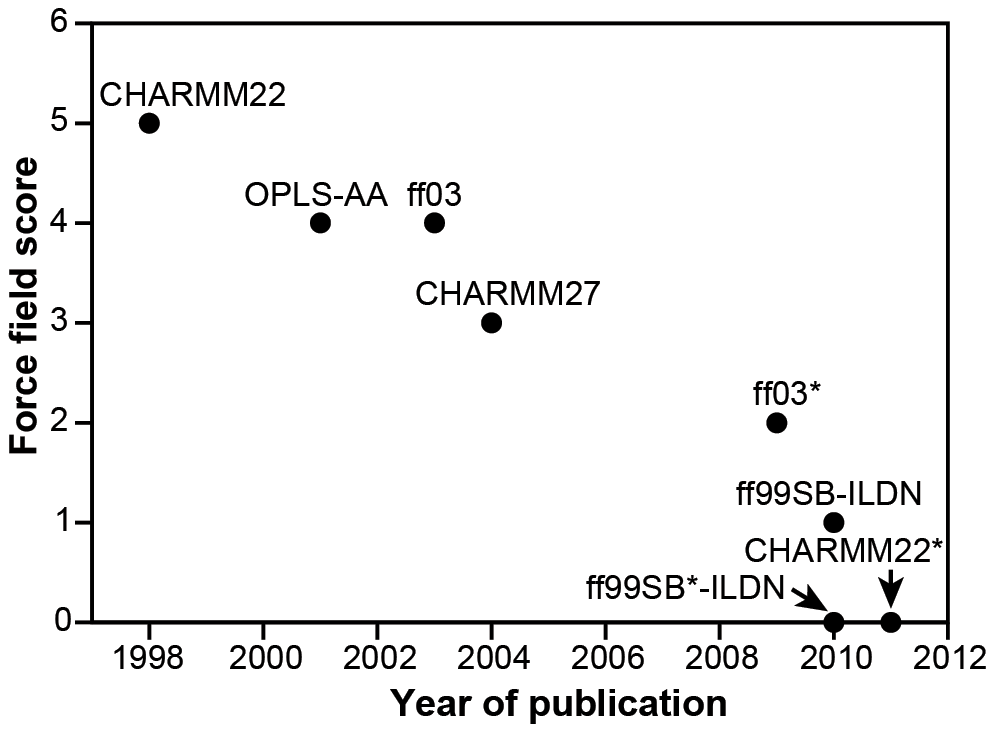
Benchmarking Small Molecule Forcefields at the Scale of NIST
Kyle A. Beauchamp, Choderalab@MSKCC
Slides here: goo.gl/rKGhzZ
Forcefields: Are we there yet?
Water and protein: getting better

Small molecule forcefields need work
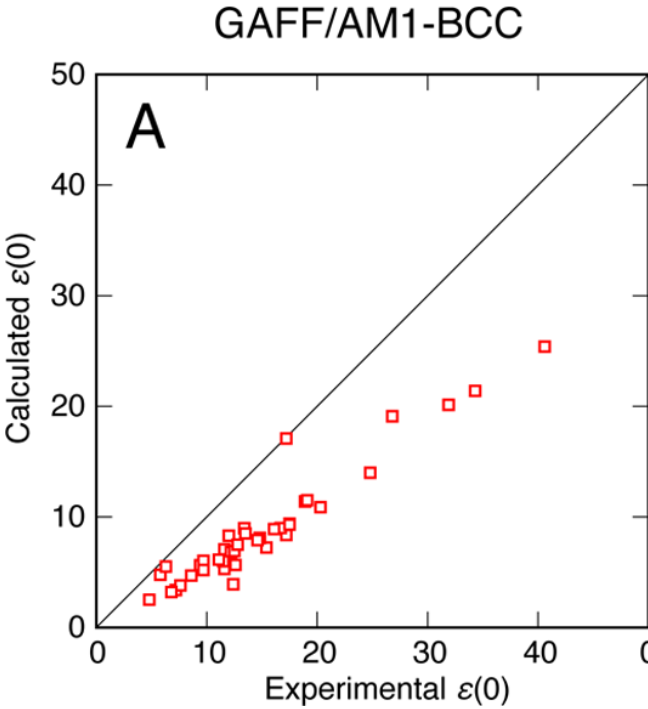
Data access is killing forcefields
- Forcefields should be consistent with all available data
- Most datasets are heterogeneous, offline, and static
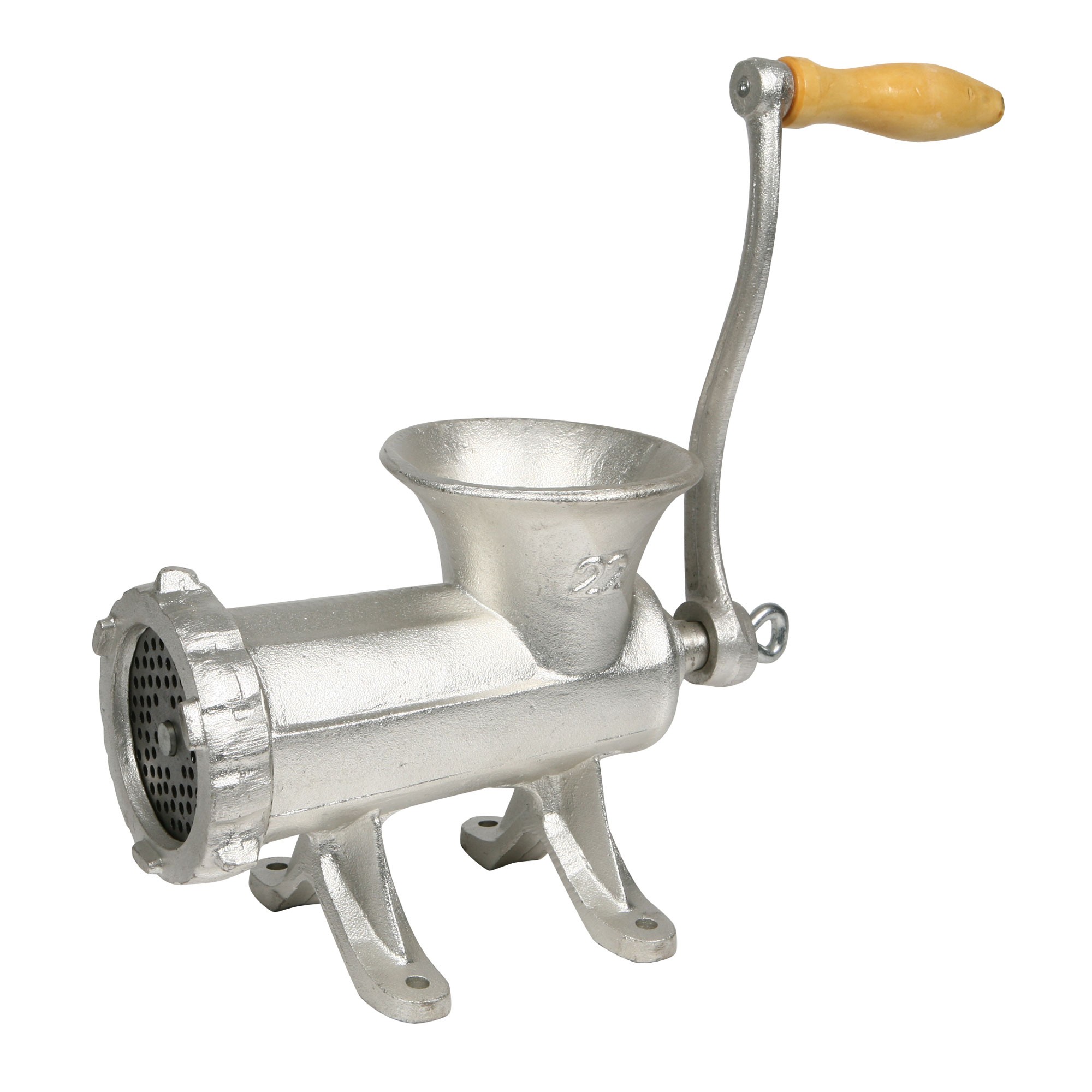
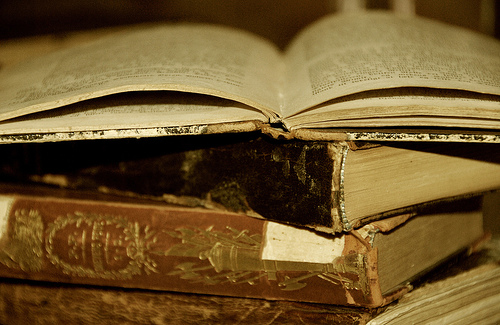
WANTED: Reliable, machine-readable, open archive of physicochemical measurements!
NIST Thermodynamics Research Center
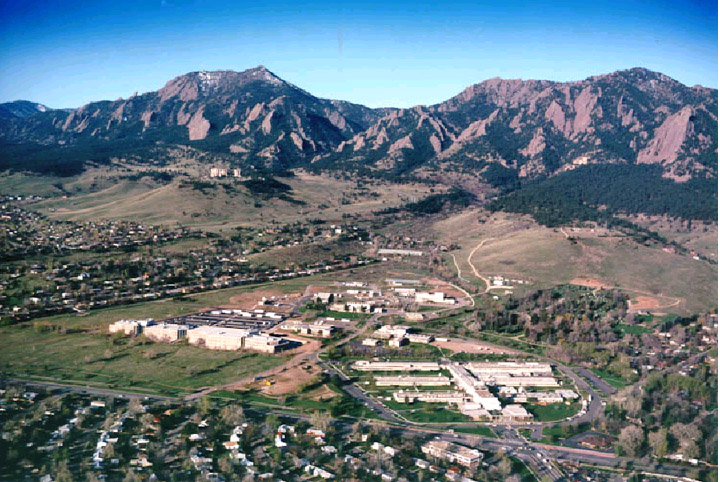
Data Capture at NIST/TRC: ThermoML

ThermoML is rapidly growing
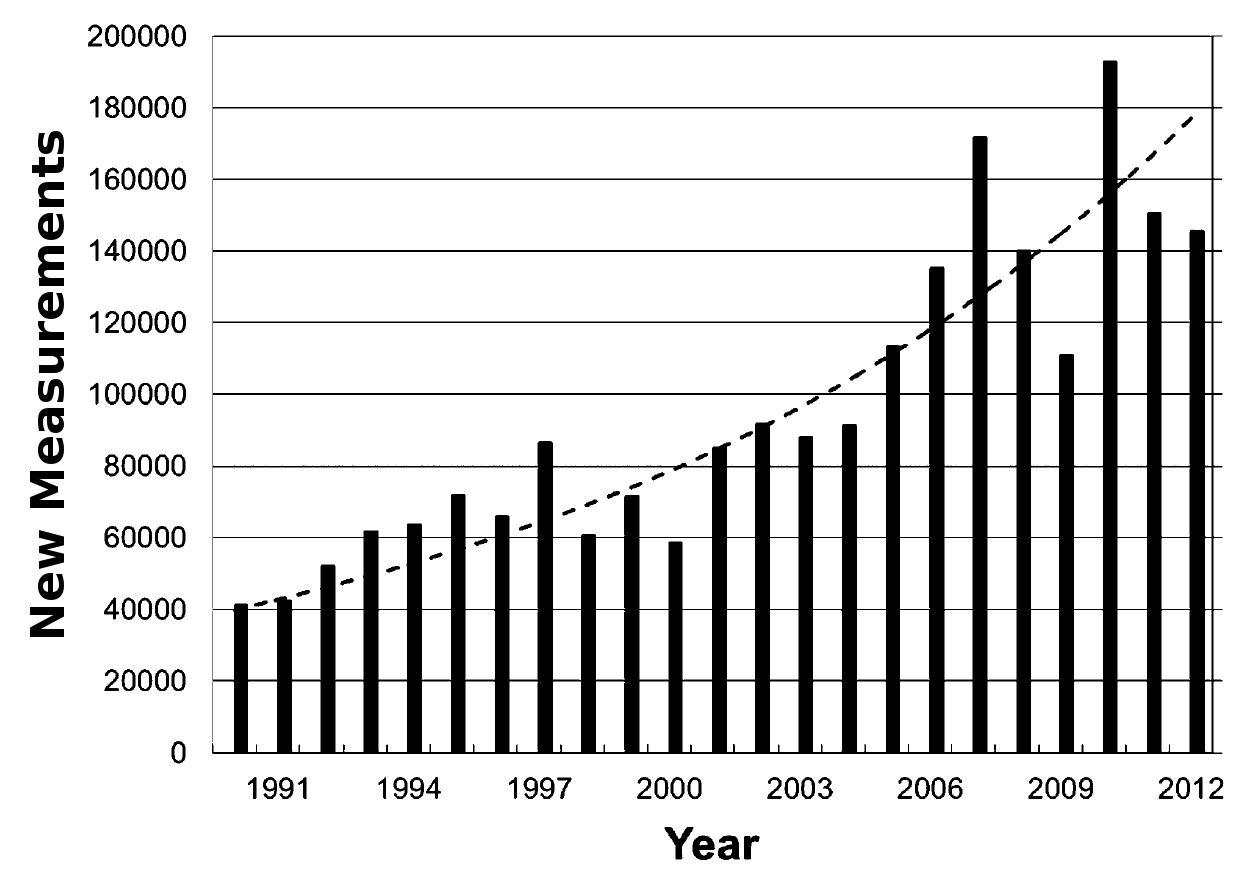
Can we leverage ThermoML for forcefield validation?
Density and dielectric constants as forcefield tests
- Sensitive to nonbonded parameters
- Simple ensemble average geometric interpretation
How many measurements are there?
Munging the ThermoML with pyxb and pandas

Benchmarking neat liquid densities and dielectric constants
- OpenMM 6.3
- GAFF / AM1-BCC (Antechamber + OpenEye)
- Converge each density to 0.0002 g / mL (
$\approx$ expt. error)
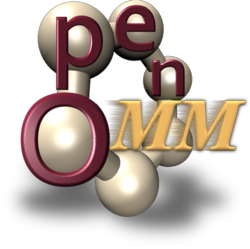
Densities are in the ballpark
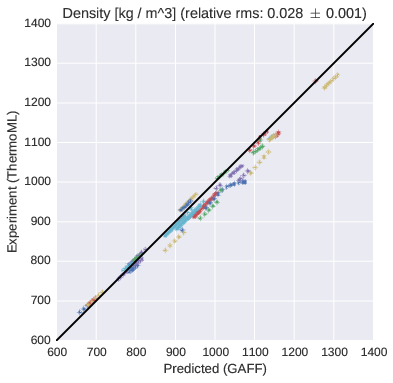
Static dielectric constants are consistently underestimated
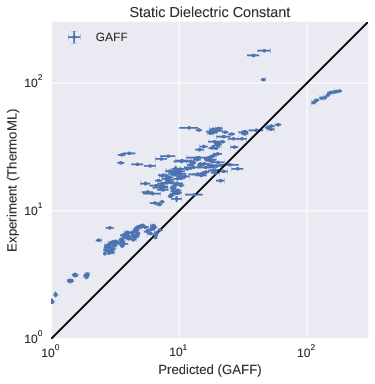
Fixed charges fail to capture polarizability
Observed: $\epsilon \approx 2.2$, Predicted: $\epsilon \approx 1.001$, $\Delta \Delta G_{solv} \approx$ 2 kcal / mol
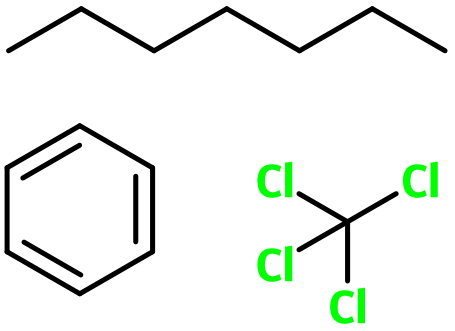
Atom counting predicts molecular polarizability to within 2%

Empirical atomic polarizability corrections reduce bias
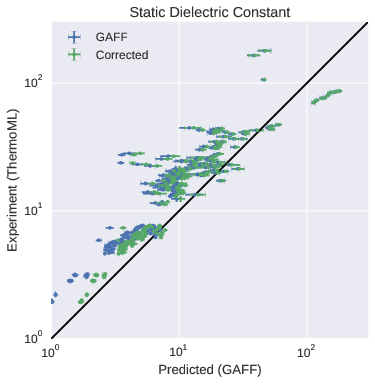
Continuous integration of forcefields
Live update stream now available at trc.nist.gov/RSS/
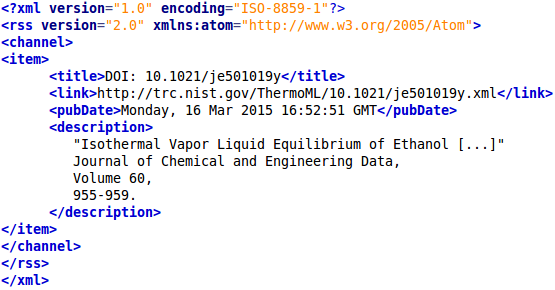
Where do we go from here?
- Scale up, real-time simulation, web frontend
- Perform new experiments in automated wetlab
- Bayesian (MCMC) forcefield / experimental design
- Polarizable forcefields
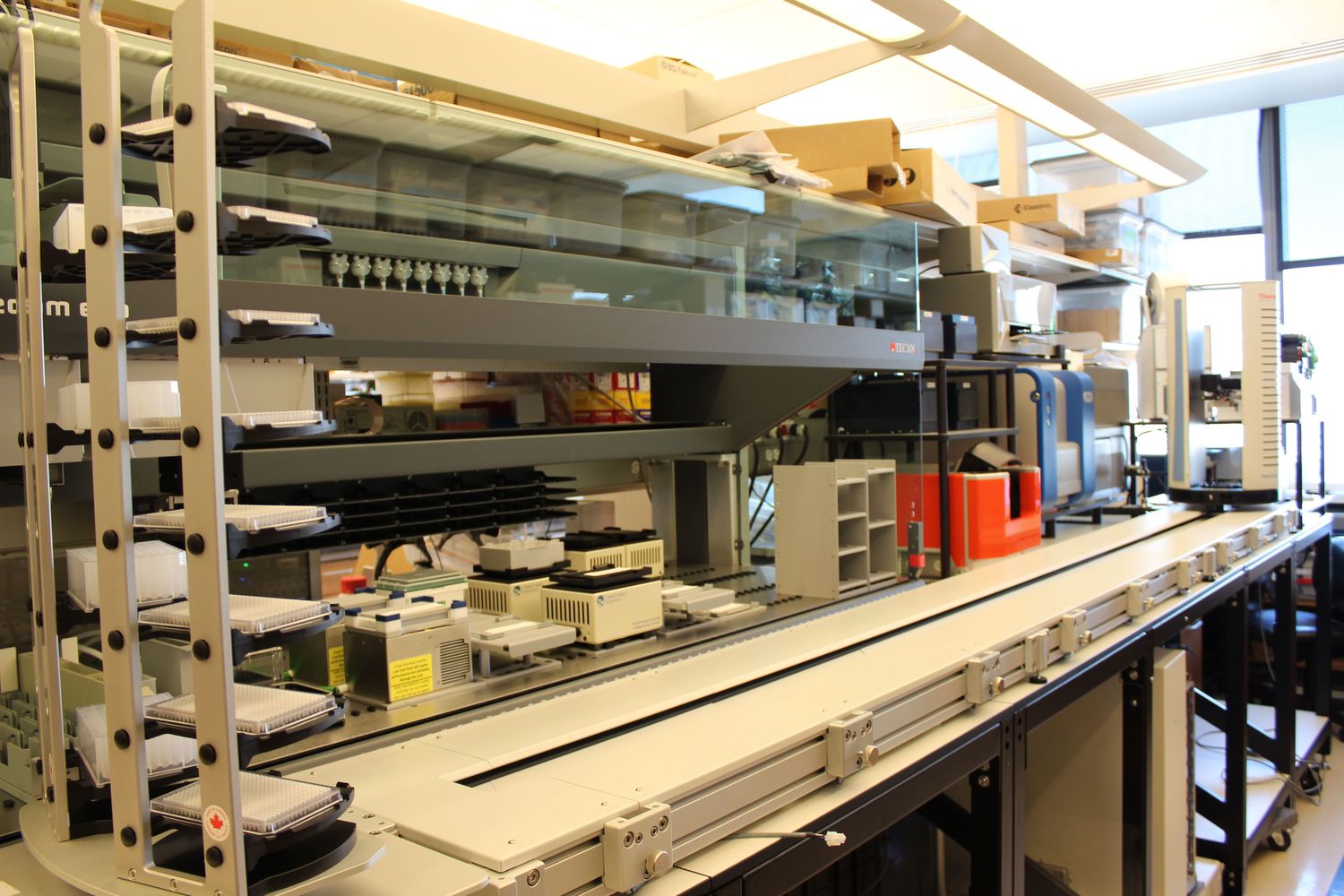
Conclusions
- Small molecule forcefields need help
- ThermoML is a NIST-supported, machine-readable, and growing set of physicochemical data
- We built a semi-automated benchmark of densities and dielectric constants in ThermoML
- Empirical polarizability model improves comparisons to measured dielectric constants
Funding and Acknowledgments

- Julie Behr (MSKCC)
- Patrick Grinaway (MSKCC)
- Bas Rustenburg (MSKCC)
- John Chodera (MSKCC)
- Kenneth Kroenlein (NIST)